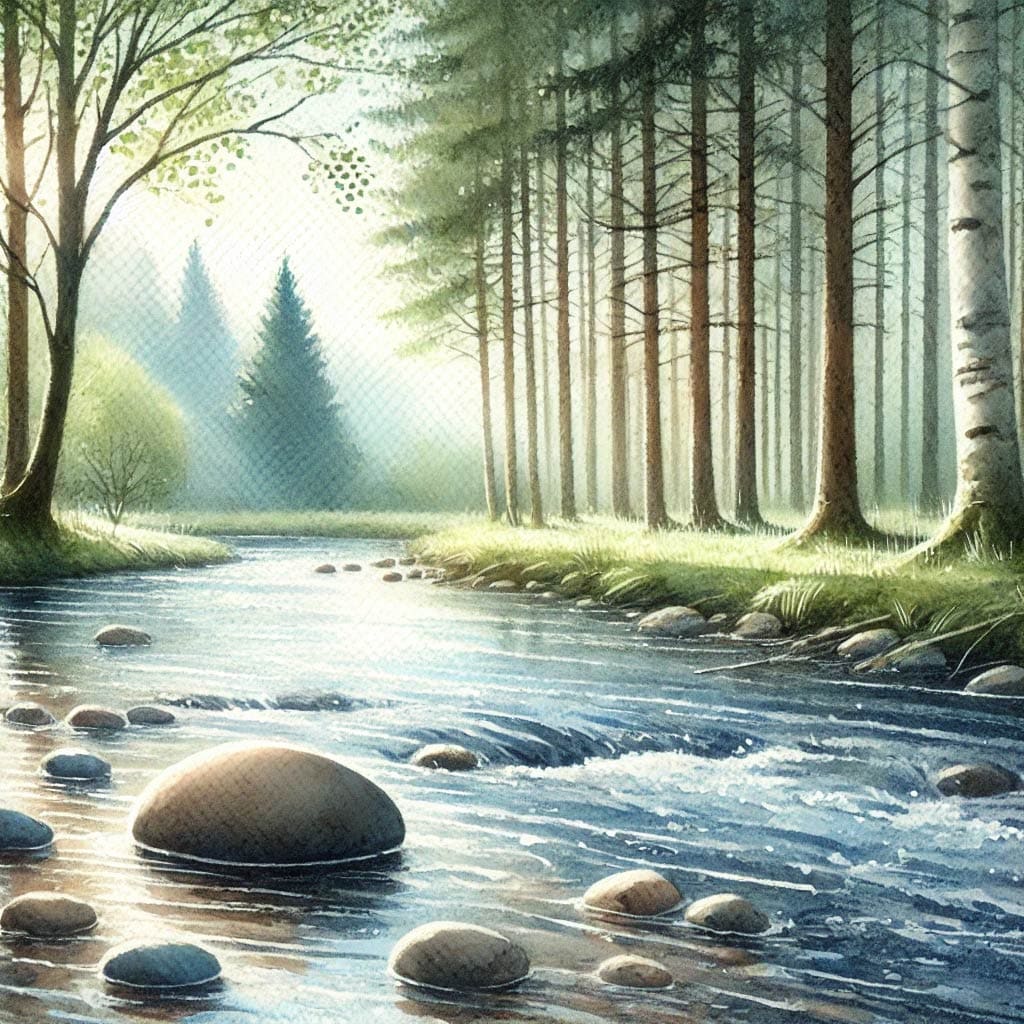“Rest is the space where we recharge, reflect, and reconnect with the rhythms of life. It’s not an indulgence, but a necessity for wellbeing.”
For much of our lives, we have been told that rest is something we must earn, something we have to work hard for. It is ingrained into our culture that rest is a reward for this hard work, and is a luxury to be indulged in only when everything else has been done. Even when we sleep, many of us feel guilty for doing so, feeling we should be doing more, achieving more, being more.
Our world has become one that values busyness over stillness. When we’re asked the question, “How are you?” all too often we answer with the automatic reply of: “Busy!” as though that alone proves our worth.
I know this feeling very well, because I have been that person. For years, when asked how I was, I would say “Busy!” without even thinking. I was busy, and I allowed myself to be too busy for my own good, but I was under the illusion that being busy meant I was worth something. It meant I was needed, valued, successful. In some ways, it fed my ego and also my confidence – I had the idea that my worth was measured by how much I did, how full my days were, how much I achieved and how little time I had left for myself. The less time I had for myself, the more successful I must be!
I never stopped to ask: What if rest has its own value? What if slowing down doesn’t mean falling behind- but actually meant finding a better way forward?
In these pages I would like to explore how we can find a better way.
Rest is more than sleep
Resting means sleeping to many, but it is not just sleep. It is not simply the hours we spend with our eyes closed fast to sleep. Rest is dynamic, it is the silent pause between the breaths we take, the slow exhale at the end of the day. It is a moment where we can release the weight we carry; physically, mentally, and emotionally. It is the space where we can allow ourselves to simply be, without expectation or demand.
And it is just as valuable as everything else we do.
The Rhythms of Rest
In nature, everything is constantly changing. The seasons shift. The tide rises and falls. Even the sun sets every day, seemingly surrendering to the night. Rest is part of this, woven into nature and into the very rhythm of life itself. Yet humans are the only creatures who resist it.
Consider the way animals rest:
A cat stretches in the warmth of the sun, unbothered by time.
A bird perches in stillness before it flies again.
A deer stops to drink at the river, trusting that the moment of pause will not leave it behind.
They do not question whether they have “earned” their rest, they simply respond to the needs of their bodies.
Humans, too, were designed to rest in rhythm with the world. Our ancestors followed the rising and setting sun, spent time outdoors, and lived in tune with nature’s cycles. Modern life demands that we stay switched on all the time. We are always ‘plugged in’, available and productive. The result? Deep exhaustion masked as just tiredness.
This exhaustion is not just because of a lack of sleep. It is about a lack of space – space to breathe, to think, to feel. When we don’t allow ourselves this space, our bodies eventually force us into it—through burnout, illness, or emotional depletion.
And the truth is, we don’t always realise when we need rest; not until exhaustion or illness finally catches up with us.
We push through the tiredness. We drink another coffee. We tell ourselves we’ll rest after we finish one more task, one more obligation. We don’t notice the slow unravelling, the way fatigue settles into our bones, the way our patience wears thin, or how our thoughts become tangled. We don’t see the dark slippery slope into negativity.
But when we realise, we can reclaim rest before we reach that breaking point and we don’t need to fall into the darkness. We just need to open our eyes.
The Deeper Layers of Rest
We often mistake distraction for restoration. We collapse into bed, scroll mindlessly, watch a screen, and wonder why we still feel drained. True rest is not about escaping, it is about renewal.
There are different layers to rest, and sleep is only one of them. Throughout this book, we will explore these deeper layers:
Physical Rest – Giving the body time to restore, beyond just sleep.
Mental Rest – Quietening the endless chatter of the mind.
Emotional Rest – Releasing the burdens we carry, the worries we suppress.
Creative Rest – Allowing inspiration to rise from stillness.
Spiritual Rest – Reconnecting with something greater than ourselves.
We need all of these forms of rest to feel truly whole.
Daily Rituals of Rest
One of the biggest misconceptions about rest is that it has to be big or structured. We think it has to be a weekend away, a long awaited holiday, a full night’s sleep, a long meditation session. Yet we can experience true rest in our everyday moments, we just need to know where to find it.
Instead of waiting for rest to come in large doses, we can integrate it into daily rituals—small pauses that allow us to breathe, reset, and reconnect with ourselves.
Simple Ways to Rest Throughout the Day
Softening the body in the middle of busyness
While waiting in a queue, sitting at a desk, or walking from one place to another—notice where your body holds tension. Unclench your jaw, relax your shoulders, exhale fully.
Taking a conscious breath before responding
Whether it’s an email, a conversation, or a decision; just pause. Take a breath. Give yourself space before consciously responding rather than immediately reacting.
Sit with a warm drink and do nothing else
No phone, no distractions – just the warmth of the cup, the aroma, the moment of stillness.
Let your mind wander during movement
Instead of always filling walks or drives with music, podcasts, or calls; allow moments of quiet. Let your thoughts settle, rather than constantly consuming new information.
Watch the sky for a moment
Whether it’s sunrise, sunset, or simply clouds moving overhead. This small moment shifts your perspective, bringing a quiet awareness to the present.
End the day with gratitude, rather than worry
Instead of running through tomorrow’s to-do list in your mind, name three things you’re grateful for before bed. It gently signals to the brain that it’s okay to rest.
Rest is not something we must set aside separate from life. It is something we can invite into it—a rhythm we return to again and again.
The First Step: Giving Yourself Permission to Rest
To rest is to allow ourselves to be held by life, rather than always trying to hold everything together.
And so, let this be your first step: Give yourself permission to rest. Not later, not when you’re exhausted, but now.
Pause. Breathe. Feel the stillness within you.
This is where rest begins.
Story: The River and the Stone
There was once a traveller who wandered endlessly, always moving, always seeking. He crossed valleys, climbed mountains, pushing forward through deserts, believing that somewhere ahead, he would find what he was looking for – though he never quite knew what that was.
One day, feeling exhausted, he came upon a great river. Its waters flowed effortlessly, winding through the land, shimmering under the golden sun. By the river’s edge sat an old woman, her hands resting on the stone beside her. She quietly watched the water, as if listening to a wisdom only she could hear.
The traveller, impatient to continue his journey, asked her, “Tell me, wise woman, how do I find what I seek?”
She smiled and pointed to the river. “Sit with me, and let the water give you the answer.”
The traveller hesitated. He didn’t have time to stop. Yet something in the way she spoke made him pause. He sat beside her, watching the current glide over the rocks, feeling the rhythm of its movement.
“Look at how the river moves,” the woman said. “It rushes forward, just as you do. It leaps over stones, carves its way through the land, always moving, never still. You have lived like this current—always pushing, always chasing.”
The traveller frowned. “But I am not a river.”
She chuckled softly. “Not all of it, no. You have been only the rushing part of the river. But the river does not only rush—it slows in deep bends, it lingers in quiet pools, it pauses when the land allows it to. If it only ever hurried forward, it would lose itself before reaching the sea.”
He said nothing.
The woman placed her hand on the smooth stone beside her. “And then, there is the stone. It does not move, yet it is shaped by the water. It does not chase after anything, yet all it needs comes to it in time.”
She turned to him. “The river and the stone – both move through life in their own way. But you have only known the river’s rush, never its rest. If you never learn to be still, how will you ever be shaped by what is meant for you?”
The traveller sat in silence, feeling the weight of her words. He had spent so long chasing, striving, never stopping to listen, never allowing himself to simply be.
For the first time in years, he let out a slow breath. He placed his hands on the cool stone, feeling its quiet strength beneath his fingers. And as the river flowed beside him, he understood.
There is wisdom in movement. But there is also wisdom in stillness.
That day, the traveller did not move forward. He rested.
And in that rest, he found what he had been looking for all along.

